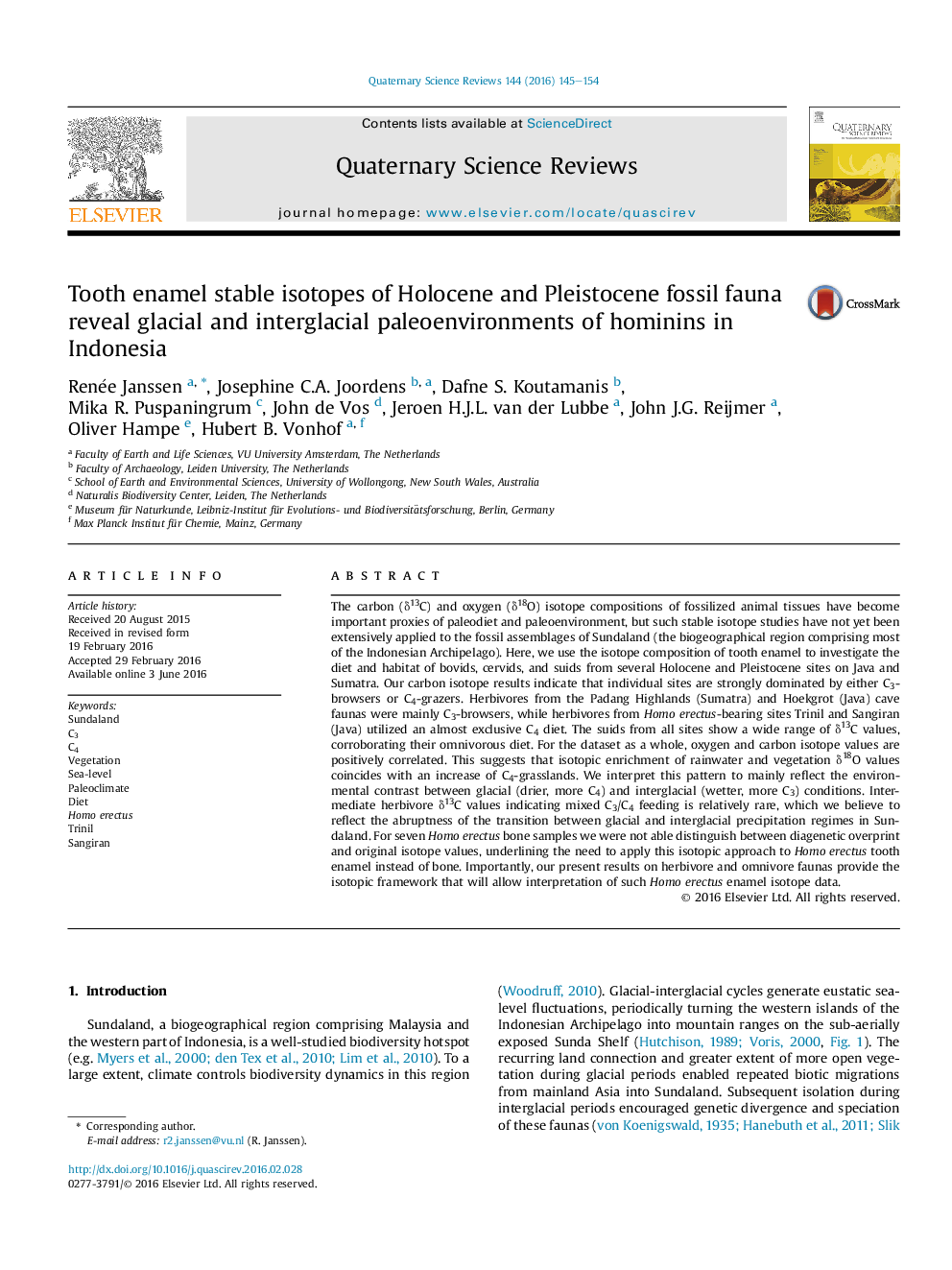| کد مقاله | کد نشریه | سال انتشار | مقاله انگلیسی | نسخه تمام متن |
|---|---|---|---|---|
| 4735988 | 1640791 | 2016 | 10 صفحه PDF | دانلود رایگان |
• Stable isotopes in ungulate enamel are used as paleodiet and -habitat proxies.
• Quaternary Sundaland sites are dominated by either C3-browsers or C4-grazers.
• Isotope results show contrast between typical glacial and interglacial conditions.
• We pose that mixed feeding is rare due to abrupt climate transitions.
• Isotope values in Homo erectus bones are diagenetically overprinted.
The carbon (δ13C) and oxygen (δ18O) isotope compositions of fossilized animal tissues have become important proxies of paleodiet and paleoenvironment, but such stable isotope studies have not yet been extensively applied to the fossil assemblages of Sundaland (the biogeographical region comprising most of the Indonesian Archipelago). Here, we use the isotope composition of tooth enamel to investigate the diet and habitat of bovids, cervids, and suids from several Holocene and Pleistocene sites on Java and Sumatra. Our carbon isotope results indicate that individual sites are strongly dominated by either C3-browsers or C4-grazers. Herbivores from the Padang Highlands (Sumatra) and Hoekgrot (Java) cave faunas were mainly C3-browsers, while herbivores from Homo erectus-bearing sites Trinil and Sangiran (Java) utilized an almost exclusive C4 diet. The suids from all sites show a wide range of δ13C values, corroborating their omnivorous diet. For the dataset as a whole, oxygen and carbon isotope values are positively correlated. This suggests that isotopic enrichment of rainwater and vegetation δ18O values coincides with an increase of C4-grasslands. We interpret this pattern to mainly reflect the environmental contrast between glacial (drier, more C4) and interglacial (wetter, more C3) conditions. Intermediate herbivore δ13C values indicating mixed C3/C4 feeding is relatively rare, which we believe to reflect the abruptness of the transition between glacial and interglacial precipitation regimes in Sundaland. For seven Homo erectus bone samples we were not able distinguish between diagenetic overprint and original isotope values, underlining the need to apply this isotopic approach to Homo erectus tooth enamel instead of bone. Importantly, our present results on herbivore and omnivore faunas provide the isotopic framework that will allow interpretation of such Homo erectus enamel isotope data.
Journal: Quaternary Science Reviews - Volume 144, 15 July 2016, Pages 145–154
